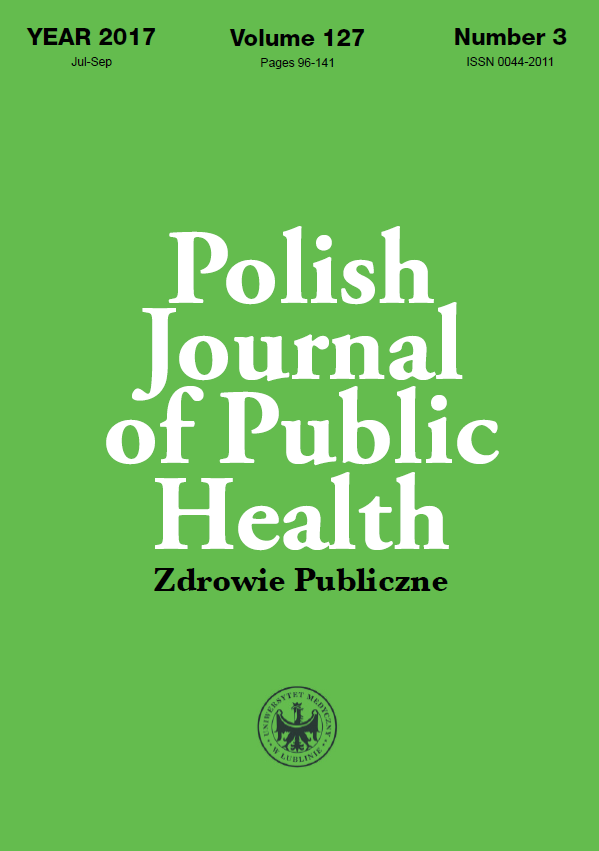Modern gastronomic technologiesin optimization of pro-health food potential
DOI:
https://doi.org/10.1515/pjph-2017-0029Keywords:
gastronomic technology, pro-health food, chronic non-communicable diseasesAbstract
All human senses participate in the sensory evaluation of food, which means that such features as taste, flavour, appearance, or texture determine the acceptance and choice of a dish. Seeking to satisfy consumer requirements and offer a dish or food with the desired organoleptic features, the food industry initially used a wide range of food additives compensating for the loss of colour, taste or flavour of the dish. At present, with an increase in consumers’ awareness and nutrition knowledge, departure is observed from the use of food additives to the benefit of using modern technologies in the food industry. The progress in food science, concerning especially, the phenomena taking place during the storage or processing of food, gives direction to the application of modern technical solutions or materials, and also provides guidelines within the area of gastronomic technology concerning the shaping of not only organoleptic features of the dish, but also activities aiming at the preservation of pro-health potential of food. This issue becomes even more important in the context of increasing epidemics of chronic non-communicable diseases (NCD) in contemporary western societies, in the etiopathogenesis of which, health behaviours play a crucial role.
The subject of the report will be analysis of the current state of knowledge in the area of food and nutrition sciences, concerning the possibility of using modern gastronomic technologies in order to preserve or enhance the pro-health potential of food, possible to use within the primary and secondary prevention of NCD.
References
1. Navarro V, Serrano G, Lasa D, et al. Cooking and nutritional science: gastronomy goes further. Int J Gastron Food Sci. 2012;1(1):37-45.
2. Global Health Observatory (GHO); [http://www.who.int/gho/ncd/en/] (access on 19 maja 2017).
3. Vega C, Ubbink J. Molecular gastronomy: a food fad or science supporting innovative cuisine? Trends Food Sci Technol. 2008;19(7):372-82.
4. Gawęcki J (ed). Ewolucja na talerzu czyli wczoraj, dziś i jutro żywienia człowieka. Poznań: Wyd. Uniwersytetu Przyrodniczego w Poznaniu; 2015.
5. Koziorowska B. Projektowanie Technologiczne Zakładów Gastronomicznych Kuchni Hotelowych i Szpitalnych. [http://www.gastro-projekt.pl/] (access on 11 kwietnia 2017).
6. Domaradzki P, Litwińczuk A. Wpływ dojrzewania na kruchość mięsa - hipotezy tenderyzacji. [http://www.rsi2004.lubelskie.pl/doc/sty6/art/Domaradzki_art.pdf] (access on 12. lipca 2017).
7. Schwägele F. Kühlung, Kühllagerung und Fleischreifung. Fleischwirtschaft. 1999;6:103-6.
8. Razminowicz RH, Kreuzer M, Scheeder MRL. Quality of retail beef from two grass-based production systems in comparison with conventional beef. Meat Sci. 2006;(73):351-61.
9. Florek M, Domaradzki P, Litwińczuk P. Teorie dotyczące naturalnych procesów kruszenia mięsa po uboju. Żywn Nauka Technol Jakość. 2016;2(105):34-48.
10. Sykut B, Kowalik K, Droździel P. Współczesne opakowania dla przemysłu żywnościowego. Nauki Inżynierskie i Technologie. 2013;3(10):115-21.
11. Czerwińska D. Próźniowe pakowanie żywności. Prz Gastr. 2006;5:6-7.
12. Kluszczyńska D, Sowińska W. Wpływ procesów technologicznych na zawartość substancji biologicznie aktywnych w owocach borówki czernicy. Żywn Nauka Technol Jakość. 2014;4(95):30-42.
13. Zalewski S. Zastosowanie technologii Sous-vide do pakowania chłodniczego potraw gotowych do spożycia. Roczn. PZH, 1999;50(2):163-9.
14. Zalewski S. Podstawy technologii gastronomicznej. Warszawa: Wyd. WNT; 2003.
15. Kunachowicz H, Nadolna I, Iwanow K. Wartość odżywcza wybranych produktów spożywczych i typowych potraw. Warszawa: Wyd. PZWL; 2012.
16. Gruzińska M, Zgórska K. Wpływ obróbki wstępnej oraz metod gotowania na zawartość azotanów w warzywach. Rocz Ochr Śr. 2005;7:233-41.
17. Komolka P, Górecka D. Wpływ obróbki termicznej warzyw kapustnych na zawartość błonnika pokarmowego. Żywn Nauka Technol Jakość. 2012;2(81):68-76.
18. Różańska D, Regulska-Ilow B, Ilow R. Wpływ procesów kulinarnych na zawartość wybranych witamin w żywności. cz. I. witamina C i foliany. Bromat Chem Toksykol. 2013;3:241-9.
19. Różańska D, Regulska-Ilow B, Ilow R. Wpływ procesów kulinarnych na zawartość wybranych witamin w żywności. cz. II. Tiamina, ryboflawina, niacyna. Bromat Chem Toksykol. 2013;3:250-57.
20. Gawęcki J. Prawda o tłuszczach. Wydawnictwo: Instytut Danone – Fundacja Promocji Zdrowego Żywienia; 1997.
21. Zin M. Utrwalanie i przechowywanie żywności. Rzeszów: Wyd. Uniwersytetu Rzeszowskiego; 2008.
22. Rapid test for controling the quality of frying oil by measuring total polar compounds percentage. [http://foodsafety.biomedal.com/products/bybrand/oleotest/] (access on 12. listopada 2017).
23. Krzymański J, Bartkowiak-Broda I, Krygier K, et al. Olej rzepakowy – nowy surowiec, nowa prawda. Warszawa: Wyd. Polskie Stowarzyszenie Producentów Oleju; 2009.
24. Aguilera JM. The engineering inside our dishes. Int J Gastron Food Sci. 2012:1;31-6.
25. Puska P. Successful Prevention of NCD: 25 Year Experiences with NKP in Finland. Public Health Med. 2002;4(1):5-7. [http://www.who.int/chp/media/en/north_karelia_successful_ncd_prevention.pdf] (access on 2 grudnia 2015).
26. Skrzypek M. Socjologia w zdrowiu publicznym. Propozycja kontekstowej interpretacji behawioralnych uwarunkowań zdrowia i jej praktyczne implikacje. In: M. Skrzypek, T. B. Kulik (ed). Dietetyka praktyczna w ujęciu interdyscyplinarnym. Lublin: Wyd. KUL; 2016.
Downloads
Published
Issue
Section
License
Copyright (c) 2018 Polish Journal of Public Health

This work is licensed under a Creative Commons Attribution-NonCommercial-NoDerivatives 3.0 Unported License.


